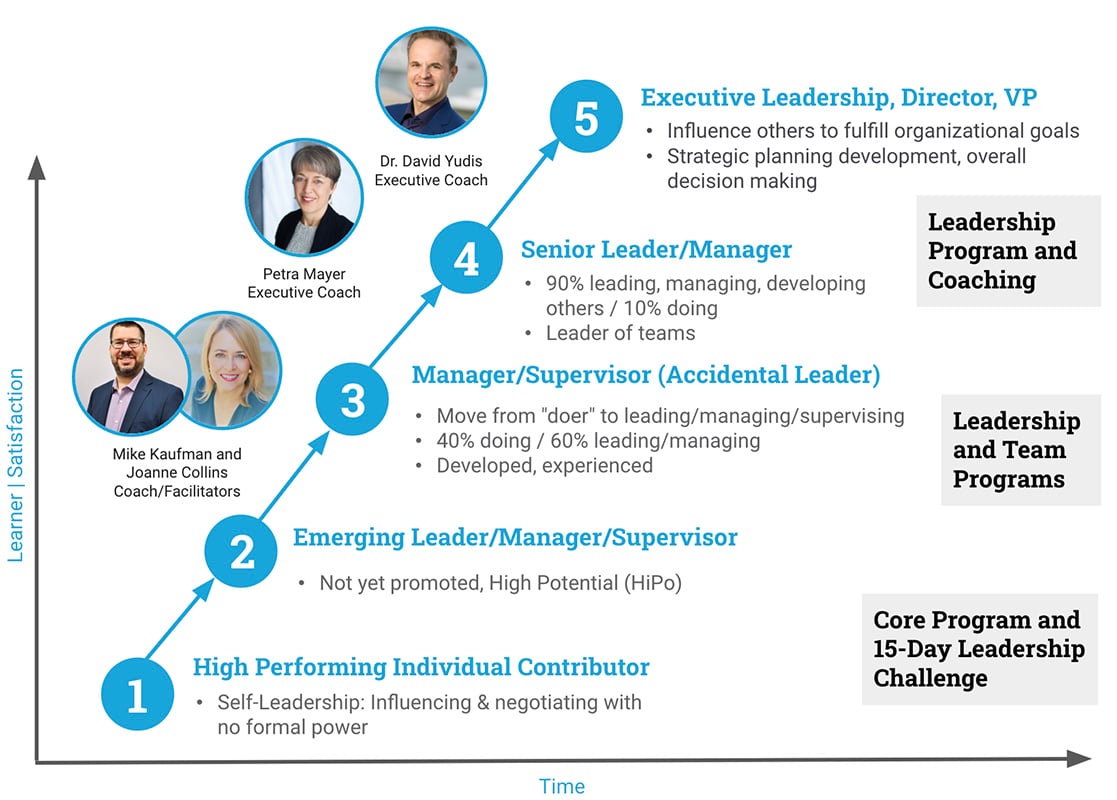In the fast-paced world of business, effective leadership isn't just a luxury; it's a necessity. However, amidst the hustle and bustle of organizational dynamics, a phenomenon known as "accidental leadership" has emerged.
Accidental leaders are individuals who find themselves thrust into positions of authority and responsibility without preparation. They excel in their respective roles as individual contributors and possess a high level of knowledge in their field. Yet, when tasked with leading teams or departments, they often find themselves grappling with unfamiliar challenges and expectations.
Vivo Team conducted extensive research on this matter and discovered that organizations began investing in leadership development on average, at the age of 49. Though other factors can be at play, these investments are happening far too late, stifling the growth and progress of both the leader and the company.
This led to the idea of the Leader Staircase—a framework steeped in Vivo Team’s methodology—designed to nurture leaders at every stage of their professional journey. The Leader Staircase model encompasses various levels of leadership within organizations, ranging from high-performing individual contributors to seasoned executive leaders. Each rung of the staircase corresponds to distinct roles, responsibilities, and developmental needs, reflecting the evolving nature of leadership as individuals ascend the corporate ladder.

At its core, the Leader Staircase emphasizes holistic leadership development, addressing the individual ("I") aspects of leadership as well as the collective ("we") and organizational ("us") dimensions. This comprehensive approach ensures that leaders are equipped to navigate the complexities of modern business environments effectively.
One critical juncture highlighted by the Leader Staircase is the transition from individual contributor to middle management—a pivotal shift that demands a distinct set of skills and competencies. Here lies the danger of the "accidental leader"—individuals thrust into managerial roles without adequate preparation or support. This underscores the importance of intentional development, bridging the gap between individual excellence and managerial proficiency.
While accidental leadership may present challenges and uncertainties, it also represents an opportunity for growth, learning, and transformation. By embracing the complexities of leadership and investing in the development of their people, organizations can turn accidental leaders into intentional stewards of success, driving innovation and excellence.
The Leader Staircase represents a paradigm shift in how organizations nurture their leadership talent. This approach fosters individual growth, organizational resilience, and adaptability in the face of change.
By embracing the principles of early intervention and tailored development, companies can empower leaders to thrive in an ever-evolving business landscape. The path to effective leadership begins not at the apex of one's career but with deliberate, strategic investment at every stage of the journey.
.png?width=125&height=61&name=Logo%20-%20Vivo%20Team%20-%20White%20(2).png)

